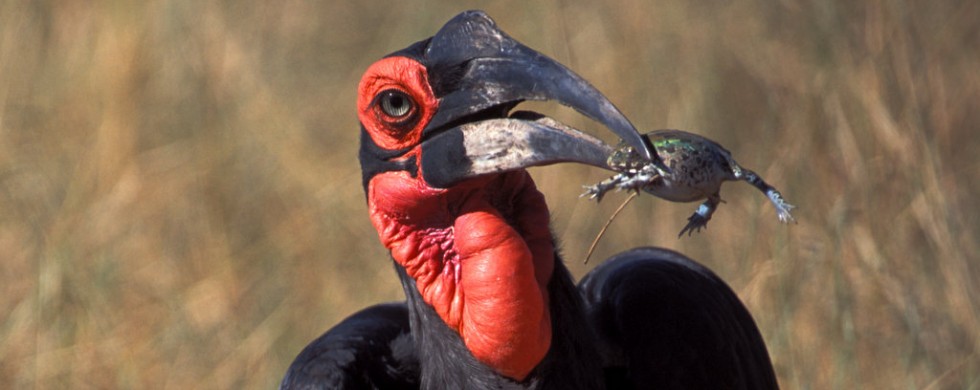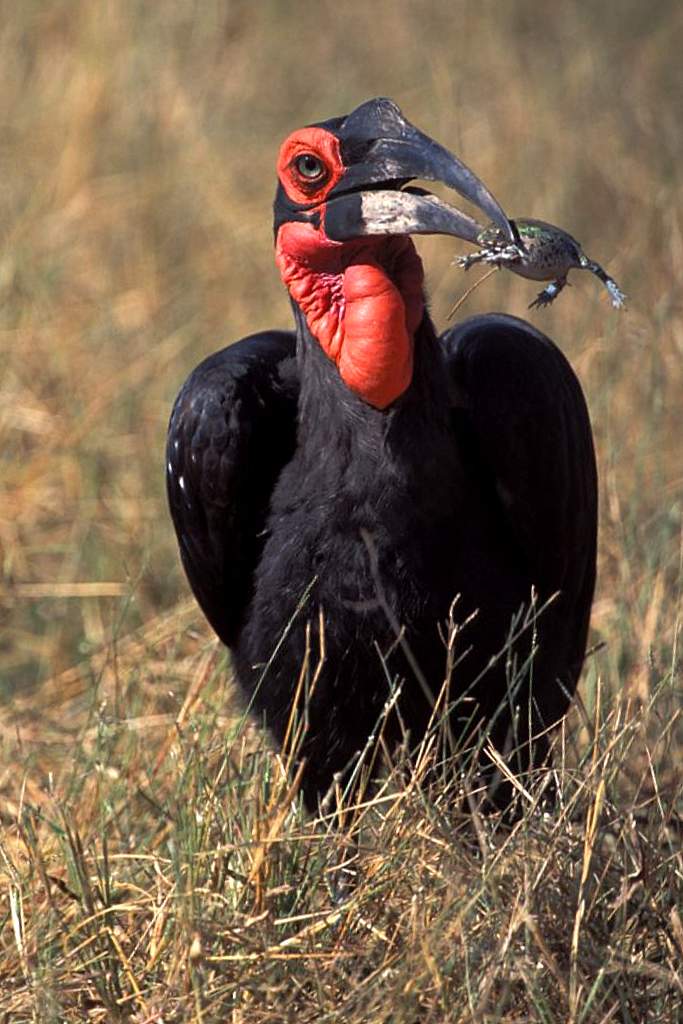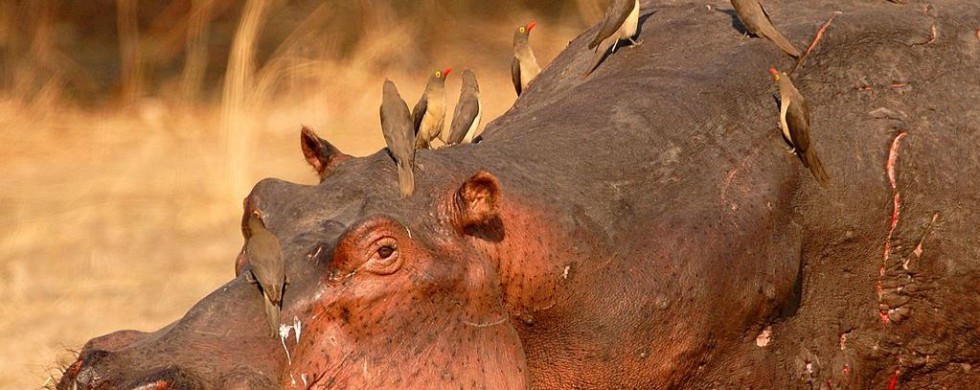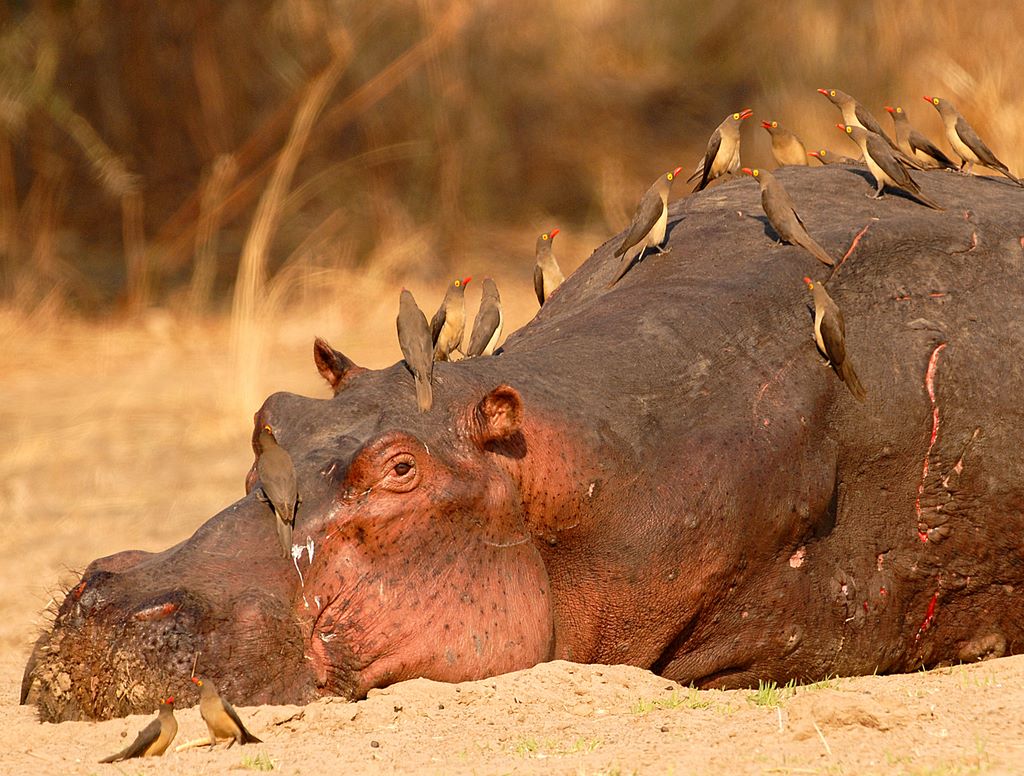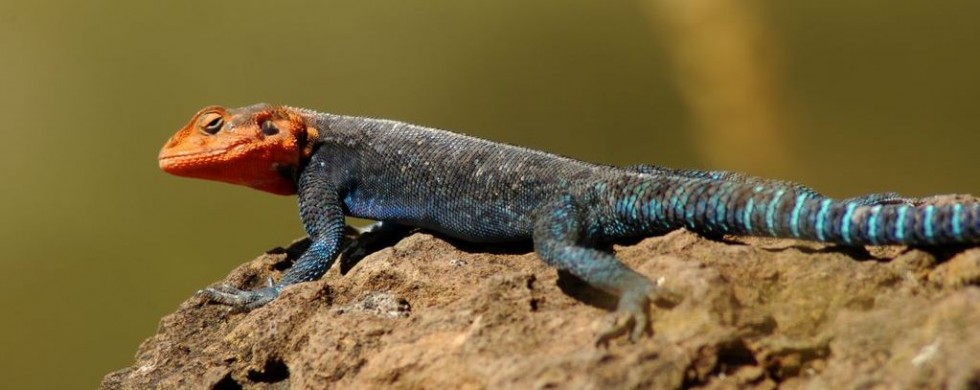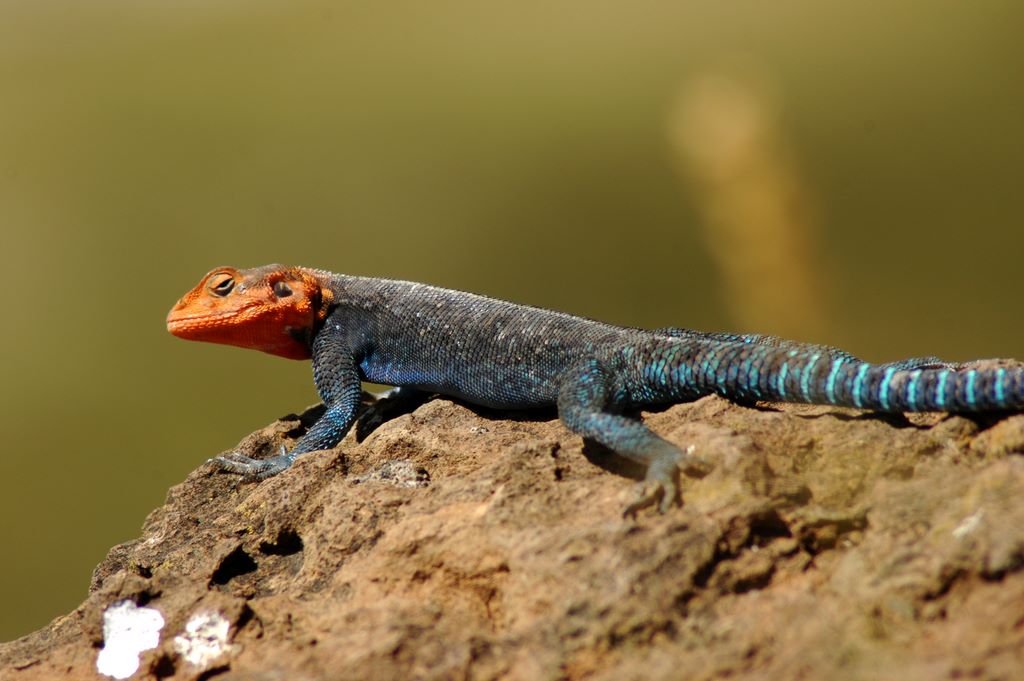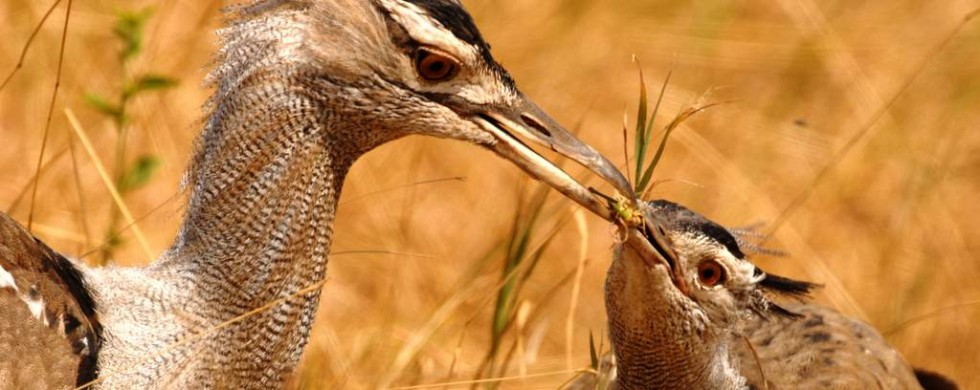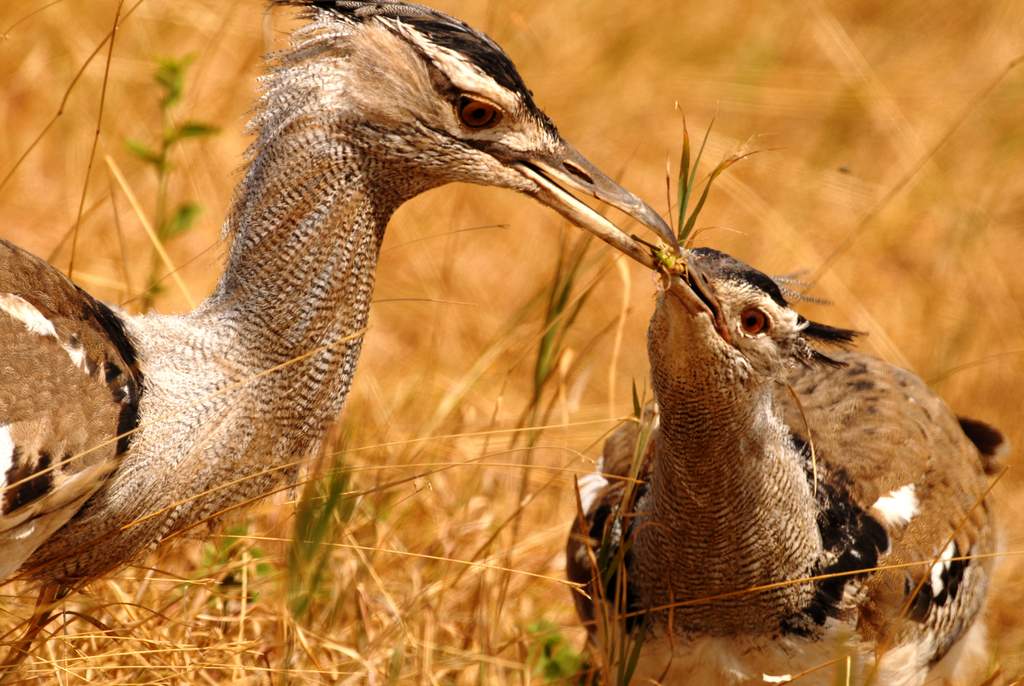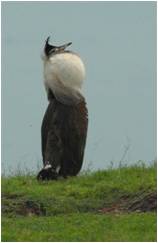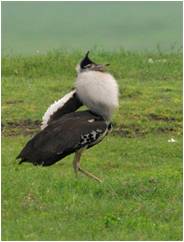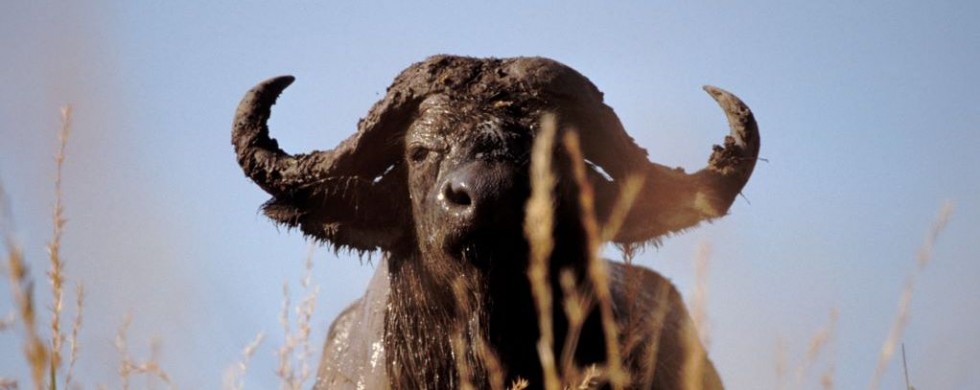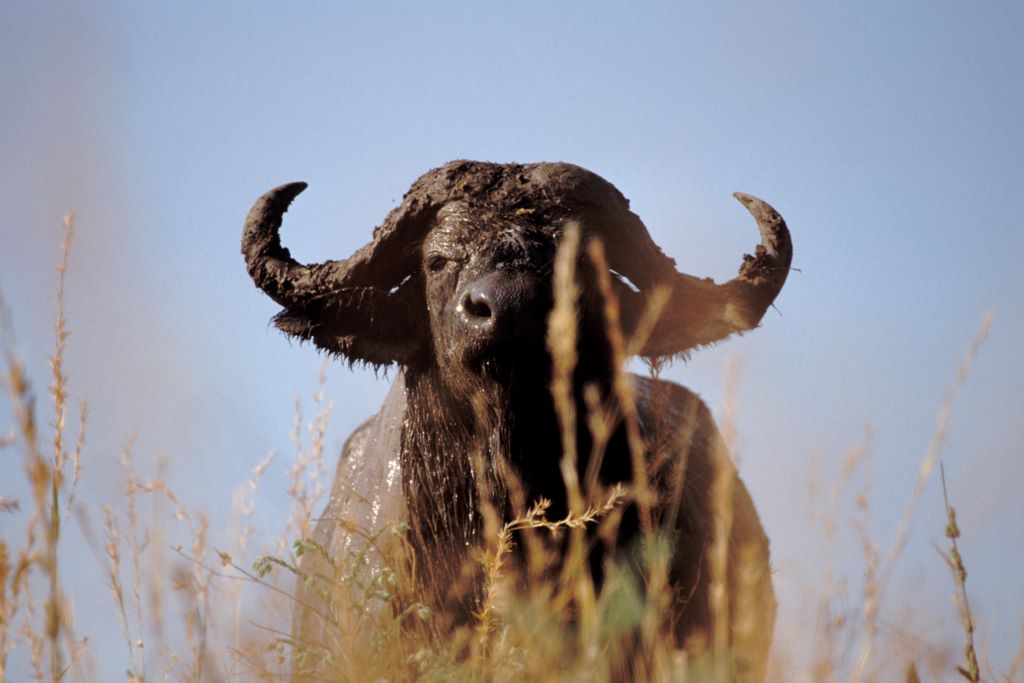15
Shot of the Month – May 2009
This image captures a life-and-death struggle – at least for the frog. I almost missed this epic battle – we originally stopped the vehicle to observe the spectacle of a hawk plucking and dining on a bird it had recently caught. After watching the hawk for a few minutes I started to scan the horizon – I have learned over the years that any time you stop, always take the opportunity to take in the 360° around you. You never know what you might find.
As I looked behind the vehicle, off in the distance I saw a group of Southern Ground Hornbills approaching. These large birds, about the size of turkeys, travel in groups of 2 to 7 and spend much of their time walking along looking to eat any small reptile, insect, or mammal they might scare up. The ground hornbill stumbled upon this frog and prepared to have lunch.
But the frog was not going down without a fight. If you look closely you will see that the frog has inflated himself. In this state the bird cannot swallow him – the frog is too big. Undeterred, the hornbill threw the frog to the ground and pecked at him a few times. He was trying to poke a hole in the frog’s skin so the “frog balloon” could not fill with air!
He picked the frog up. The frog puffed himself up again. No luck.
Try again. Peck. Peck. Peck. Pick up the frog. Inflate.
Peck. Peck. Peck. Inflate. Peck. Peck. Peck. Inflate.
This marathon battle lasted a good 5 to 7 minutes. Alas, at last, all the pecking had taken its toll on the frog and he could no longer inflate himself. Ironically, just as this happened, one of the other ground hornbills in the group walked over, snatched up the frog off the ground, tossed him in the air, and swallowed him whole. Gulp.
The interloper had snatched defeat (or in this case, “defrog”) from the jaws of victory.
(moan) 🙂

